The following information comes from local Sulphur Springs resident Tony Hughes. Mr Hughes worked on, performed engine run up, pre-flight/post flight and flew as an aircraft mechanic observer on FCF’s (functional check flight) at the Greenville, Tx. plant, formerly known as TEMCO. The Greenville plant started as Temco (Texas Engineering & Manufacturing Co.) then changed to Ling-Temco Electronics, Inc. in 1960, then Ling-Temco-Vought, Inc. in 1961. The company then changed it’s name to LTV Electrosystems, Inc. in 1965, then E-Systems, Inc. in 1972. A merger changed the name to Raytheon E-Systems in 1995, and now the company has been managed by L-3 Communications since 2002.
Douglas C-133 Cargomaster
The Douglas C-133 Cargomaster was a high-wing, four-engine turboprop transport aircraft. The huge C-133 Air Force Cargo Logistical Aircraft was the largest cargo plane in the Free World at the time, and was capable of carrying 100,000 pounds more than 2,000 nautical miles. The Douglas C-133 Cargomaster turboprop transport was larger and faster then earlier Douglas military cargo airplanes. The Cargomaster went into production without a prototype and had an unusual circular fuselage with top-mounted wings.
The C-133 could fly fully assembled tanks and transported the Douglas-built Thor intermediate range ballistic missiles.
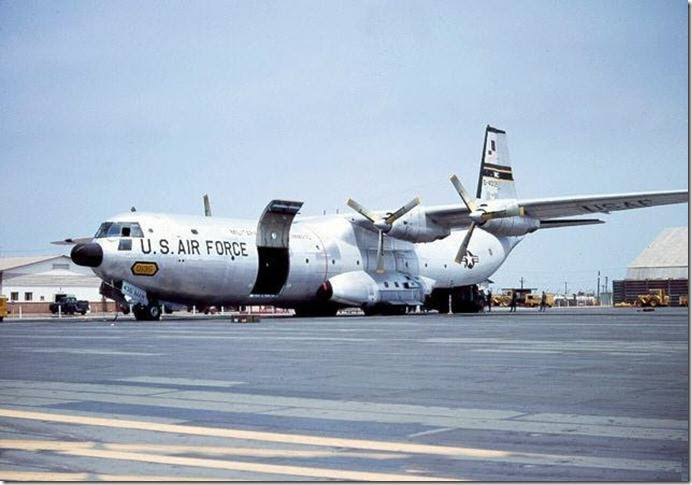
The Douglas YC-133 Cargomaster was originally conceived as an improvement of the C-124 and later redesigned as a high-wing transport with greater performance and range than its predecessor. The Douglas Aircraft Company’s giant C-124 — “Old Shaky” — had a small cargo elevator and could be loaded from the front through clamshell doors, but it sat high off the ground and its loading ramp was steep. Most importantly, it represented 1940s technology, being powered by four 3,600 horsepower radial piston engines.
The turboprop C-133 was developed to fulfill USAF requirements for a large-capacity strategic cargo aircraft. The Air Force’s global responsibilities increased in the early 1950s, just as the advent of the fuel-efficient turboprop engine promised economical long-range transport capabilities. This led the service to issue a request for its first true strategic airlifter. The new plane would have to be capable of carrying any item of equipment in the Air Force or Army inventory — including the Atlas intercontinental ballistic missile just coming into service. Other requirements were specified as well. In order to speed loading and offloading, it must be low to the ground and have a drive-in back door with a built-in ramp. The cargo compartment must also be fully pressurized so that ground troops and their equipment could be transported.
The Douglas C-133 appeared, at first glance, to be a “stretch” Lockheed C-130 with a lengthened fuselage, but seen side-by-side it was apparent that the C-133 was vastly larger in every dimension. The C-133 Cargomaster was a large and elegant design powered by four 6500 horsepower turboprops. Its wing was mounted high in order to keep the spars above the cargo compartment, and at a slight positive angle of attack to help the long fuselage during takeoffs.
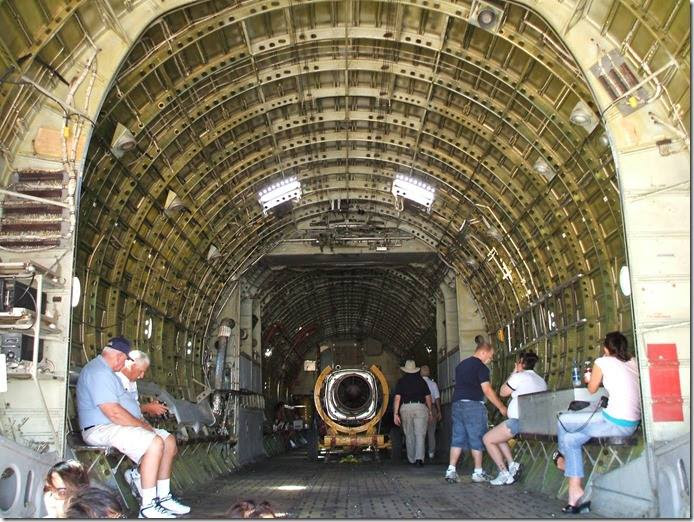
Side-mounted landing gear also cleared the cargo bay and provided for low ground clearance as well. With its rear-loading and side-loading doors, the C-133 was capable of handling a wide variety of military cargo. Most significant was its ability to transport ballistic missiles, such as the Atlas, cheaper and more quickly than by trailer over highways. The payload area was designed around the dimensions of the Atlas, which meant that it could transport the intermediate-range Thor and Jupiter missiles as well.
The C-133A was powered by four Pratt & Whitney (T34-P-7w or WA) turboprop engines. Each engine is a multistage, axial-flow, single-compressor gas turbine which produces thrust by driving a propeller at the front of the engine and discharging high-velocity gases through the nozzle at the rear. The engine is capable of developing a static maximum power (wet) of 6,500 shp. Each engine is equipped with an 18-foot Curtiss turboelectric propeller with full feathering, reverse pitch, and negative torque control features.
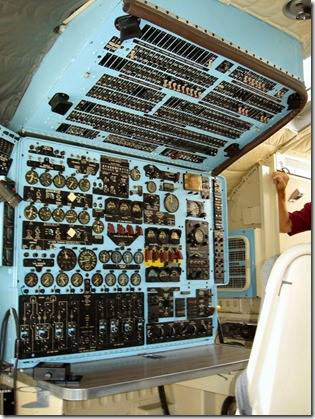
The C-133A made its maiden flight on April 23, 1956, when Douglas test pilots J.G. Armstrong and Frank C. Boyer flew the new transport from Long Beach to Edwards Air Force Base for Phase I (airworthiness tests conducted by the contractor) and Phase II (contractor compliance conducted by the Air Force Flight Test Center) evaluations. Exhaustive testing, evaluation, and some design refinements eventually resulted in a combat support aircraft that served warfighters well into the Vietnam era.
Douglas built and delivered the last Cargomasters in 1961. When production ended, Douglas had built 50 Cargomasters — 35 C-133As and 15 C-133Bs incorporated more powerful engines and “clamshell” doors at the back rather than a split-ramp door, which allowed for better fitting of the Atlas missile. Other sources report that production consisted of 15 were C-133A, 18 were C-133B, and 17 were intermediate versions, and that all were eventually upgraded to the C-133B configuration. C-133s began flying Military Air Transport Service (designated Military Airlift Command on Jan. 1, 1966) air routes throughout the world in 1958. Two C-133s established trans-Atlantic speed records for transport aircraft on their first flights to Europe. In November 1962 the first air shipment of a Minuteman took place when a C-133 transported a missile from Hill to its launching site at Malmstrom AFB, Montana.
Ling-TEMCO Electronics Corporation in Greenville, TX received the contract for depot-level maintenance of the C-133 Cargomaster in 1960. The first aircraft, 56-2006, touched down at the Greenville, TX facility Aug. 15, 1960. Ling-TEMCO Electronics/LTV Electrosystems/E-Systems performed IRAN/PARC on 146 aircraft during the period 1960-1972. Temco was the only civilian contractor to ever perform depot-level maintenance on the C-133 Cargomaster.
Between 28 Aug 57 and 15 Aug 71, ten C-133 aircraft were lost in accidents. Six were A-models and four were Bs. Crew losses were 55 personnel. Causes of seven of the accidents remained undetermined, especially because four disappeared at sea and little or no recovery was possible of wreckage or crewmembers. These losses were twenty percent of the fleet, giving rise to some sardonic humor among crewmembers that continued to fly. The fleet was grounded more than once, and the level of concern reached from the squadrons to every level of the Air Force and to Congress.
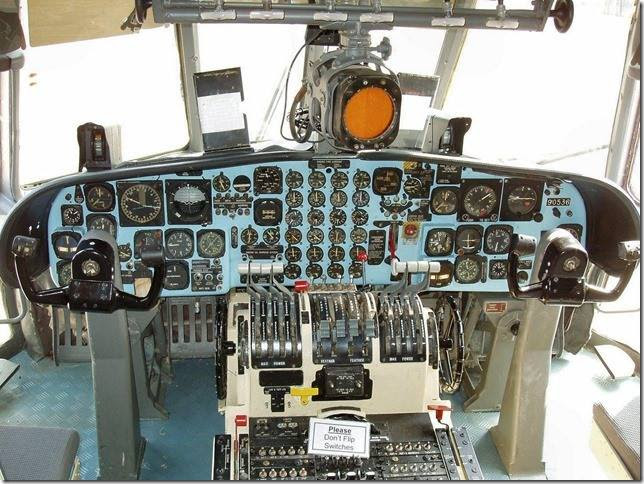
There are many conjectures about the reasons for the various crashes. These include stall characteristics of the C-133, possible electrical arcing in radios installed in the wing “saddle back” area, and icing. Especially for the airplanes that disappeared overwater, the mysteries will never be definitively solved. The stability and control of airplanes have remained important considerations as aircraft have advanced since the Wright brothers’ flights. Stall is the peaking of aerodynamic lift, occurrence of uncommanded aircraft motion about any axis, or onset of intolerable buffet or structural vibration, due to airflow separation induced by high angle of attack. The least angle at which one of these phenomena occurs is the stall angle of attack. On long flights the C-133 would climb to an altitude approaching its absolute ceiling. Poor stall warning and a vicious stall while trying to fly there are thought to have caused the disappearance of several C-133 aircraft. An approach to stall warning system was installed along with a stall strip on each wing after extensive test flights to determine the stall characteristics of the C-133.
Although a loss of 20% of the fleet over its lifetime is perhaps uniquely high for a single aircraft type, the lifetime accident rate (accidents per 100,000 flying hours) for the C-133 was lower than that for the AF as a whole.
Another Dover C-133 crew was lost in the crash of a civilian aircraft belonging to TEMCO. The crew had delivered a C-133 to TEMCO, at Greenville, TX, where the airplane would undergo IRAN. They were going to Dallas Love Field aboard a TEMCO Aero Commander, which crashed enroute, killing all aboard. Casualties included: Vernon L. Denman (TEMCO pilot), N. E. Chappell (TEMCO employee), MAJ Jack H. Culp, Sr. (AC), CPT Donald A. Cook (CP), CPT Anthony G. Lucci (N), MSG Julius V. Lee and MSG Kenneth P. Kennedy (FET).
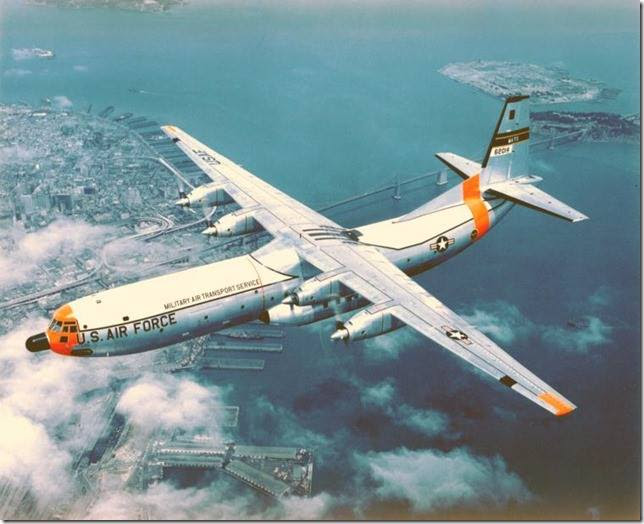
After 15 years of service, the C-133s were worn out. Originally built for 10,000 hours airframe use and 2,500 landings, they were life-extended three times, to 15,000, 17,000 and 19,000 hours. The C-5 finally entered service in FY 1971, and the last C-133 went to the bone yard on 02 August 1971 with the exception of 56-1999 a C-133A which remained active in Alaska until 2006. It was flown to Travis AFB Museum in August, 2008.
Tony Hughes started work at the Greenville, TX plant in June 1956, working at the same plant, other that a 3 year military leave, until retirement in 1996.





